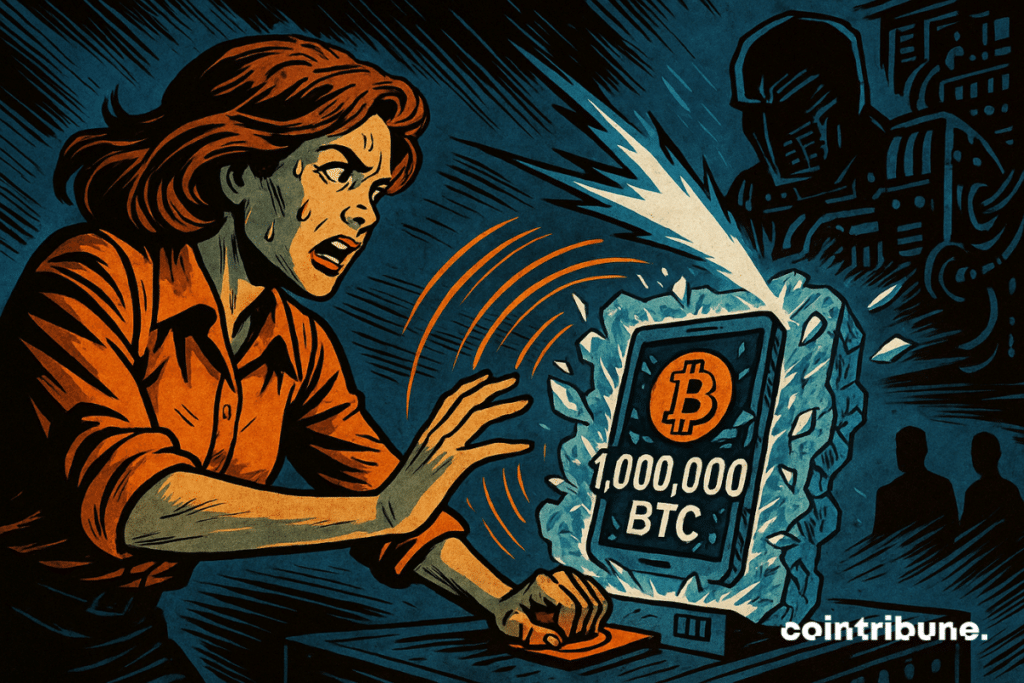Quantum Threat Looms: Bitcoin’s Cryptographic Armor Faces Ultimate Test in 2025
Bitcoin's trillion-dollar question: Will quantum computing crack its code before Wall Street cracks under its own greed?
The ticking time bomb in Satoshi's design
Developers are sounding alarms—the same unbreakable cryptography that's secured Bitcoin for 16 years could crumble under quantum attacks within our lifetime. While banks still struggle with basic blockchain comprehension, the real threat isn't regulation—it's raw computational power rewriting the rules of digital scarcity.
Quantum resistance or bust
Every ECDSA signature securing your cold wallet? Potentially crackable by 2030. The SHA-256 hashing protecting the blockchain? Might require emergency forking before your next halving cycle. Meanwhile, institutional investors keep piling into BTC ETFs—because nothing says 'due diligence' like betting on 20th-century math against 21st-century supercomputers.
The ultimate irony? Bitcoin's survival may depend on the very centralized development processes maximalists love to hate. Game theory just got quantum-entangled.

In brief
- A new BIP proposal aims to prevent risks related to quantum computing by freezing certain vulnerable bitcoins.
- Presented by Jameson Lopp and five other developers, this proposal plans to ban the use of old addresses deemed insecure.
- About 25% of bitcoins in circulation would be affected, including the 1 million BTC supposedly owned by Satoshi Nakamoto.
- This initiative sparks intense debate within the community, both for its technical and philosophical implications.
Freezing vulnerable bitcoins : an unprecedented proposal
While Trump prepares a plan to explode bitcoin, Jameson Lopp introduced on July 15 a radical Bitcoin Improvement Proposal (BIP) aimed at gradually neutralizing bitcoins stored in addresses considered vulnerable to quantum attacks.
Co-written with five other developers, this proposal is based on an incentive mechanism: forcing holders of these BTC to migrate to post-quantum addresses or risk losing access to their funds.
BTCUSDT chart by TradingView“This turns quantum security into a private incentive. If you don’t migrate (to a new type of address), you will almost certainly lose access to your funds,” summarizes the document. The goal is to prevent a collapse of trust caused by the massive compromise of private keys via quantum computing.
The proposal is structured in several concrete steps :
- The gradual ban on sending BTC to old vulnerable addresses ;
- Blocking of all spending from these addresses after a five-year delay unless prior migration ;
- The optional phase (to be defined via a future BIP) allowing post-quantum recovery of frozen funds.
According to a Deloitte study, about 25 % of bitcoins in circulation WOULD be affected, including the 1 million BTC allegedly owned by Satoshi Nakamoto. If these assets were to be unlocked and put back into circulation following a quantum attack, the network would face unprecedented selling pressure, described as a “liquidation event” by Lopp.
The authors of the proposal emphasize the historic moment for bitcoin: “Never before has bitcoin faced an existential threat to its crypto primitives”. Facing an attack deemed inevitable in the medium term, the status quo could cost much more than adopting this exceptional measure.
A consensus and implementation challenge for the Bitcoin community
Beyond its content, Lopp’s proposal triggers significant technical and political challenges. On one hand, the adoption of a BIP relies on a complex community consensus, often slow to form.
“If the Bitcoin community cannot unite and find consensus,” Lopp warned last May, “then it exposes itself to a major collective risk.” Moreover, so-called post-quantum crypto signatures involve a significant increase in data size, reigniting old debates about network scalability.
Hunter Beast, an engineer at Anduro, for example, introduced another proposal (BIP 360) to incorporate new types of post-quantum addresses, but with security levels still to be debated.
Meanwhile, other developers suggest alternative ideas. Michael B. Casey, engineering director at Marathon, proposed a solution called “Hourglass”, aiming to limit transaction throughput from old wallets without freezing them.
This shows that the community is exploring various, often competing, scenarios to address the same problem: how to ensure Bitcoin network security against a still abstract threat, but whose window for materialization is rapidly closing.
If this proposal were accepted, it would inaugurate a new era for bitcoin, where crypto security would no longer be just an individual matter, but also a responsibility of the protocol itself. Conversely, refusal to modify could preserve the integrity of the current system, at the cost of a risky bet on the pace of technological progress.
Maximize your Cointribune experience with our "Read to Earn" program! For every article you read, earn points and access exclusive rewards. Sign up now and start earning benefits.

